The decade wraps up with another engaging crop of highly readable and recommendable books on the subject of urban planning. There's a lot to learn, on many related subjects, among this year's top planning books.

From Niches Come Intersections
From political movements to specific communities to a focus on some of the many sub-disciplines involved in urban planning, niches grabbed the spotlight in the planning-related publishing world in 2019.
Over the years, planning advocacy has coalesced around a few discernible movements and organizations—perhaps most famously in recent decades with the Congress of New Urbanism. In 2019, two such movements found expression in the printed medium: Strong Towns—in a book by the same name and written by the founder of the movement, Charles Marohn—and market urbanism, in a book written by Alain Bertaud and titled Order without Design.
Another theme to emerge from this list of top books from 2019 is the uniquely local history and politics that informs planning. Vancouver, Los Angeles, Brooklyn, and the Green River provide the scene for much larger conversations about the built environment and what we can learn from the past in informing decisions about the future of the world.
Specificity also informed conclusions about much larger ideas of city building and the future of planning in books about baseball, buses, public land, and air pollution.
In a few cases, the arguments included in these books stand in direct conflict with each other. Bertaud, for instance, argues directly against the design-centric planning process favored by Larry Beasley in Vancouverism. Bertaud very explicitly states that markets should take precedent over design for planners, and their primary motivation should be to maintain and improve mobility in growing cities.
Our conclusion when reading such a diverse body of work: it all matters. We present these differing worldviews in the hope that our readers can hold more than one idea in their mind at the same time, and are motivated to hear all sides of the story.
The Planetizen team met in November 2019 to make final selections for this list according to the same selection criteria that guided similar "Top Books" lists from years past (2018 was a great year for planning books too, by the way). All books on this list were published between November 2018 through October 2019, so a few big titles on the planning bibliophile's reading list as 2019 closes down just missed that window, but will be considered for next year's list.
The Top Planning Books of 2019
Ballpark: Baseball in the American City
Paul Goldberger
Knopf
May 14, 2019, 384 Pages
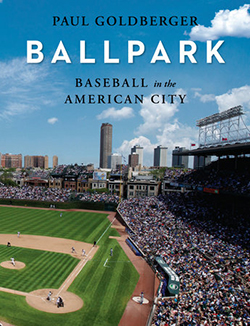 The greatest combination of fun and erudition to appear in the urban canon in a long while—if ever—Ballpark is primarily a work of architectural criticism but also an incisive bit of commentary on the evolution of the American city and of American society. Goldberger's eye for design is as sharp as ever, and his sense of history lucid. Touching on many (but not all) stadiums in the history of Major League Baseball, Golberger convincingly argues for the primacy of ballparks in city life, as civic monuments, capitalist enterprises, and, sometimes, white elephants.
The greatest combination of fun and erudition to appear in the urban canon in a long while—if ever—Ballpark is primarily a work of architectural criticism but also an incisive bit of commentary on the evolution of the American city and of American society. Goldberger's eye for design is as sharp as ever, and his sense of history lucid. Touching on many (but not all) stadiums in the history of Major League Baseball, Golberger convincingly argues for the primacy of ballparks in city life, as civic monuments, capitalist enterprises, and, sometimes, white elephants.
He also argues that the game of baseball and, by extension, its venues represent quintessentially American combinations of urban and rural, highbrow and lowbrow, and historical and contemporary. He draws cultural, stylistic, and economic connections directly from the founding of professional baseball in 1860s Brooklyn right up to opening day at Atlanta's jarringly suburban SunTrust Park (MLB's newest) in 2017—and speculates about a few parks in development. Along the way, Ballpark implicitly traces the story of American urban development and redevelopment as the prewar "jewel boxes" of the East Coast gave way to the modernist stadiums of the West Coast, the "concrete doughnuts" of the era of urban revitalization, and the retro era that swept the country in the 1990s and 2000s. Ballpark recreates cityscapes of the past with breathtaking intimacy and plays up the sense of nostalgia that, for better or worse, characterizes America's pastime.
See the Planetizen review of Ballpark.
Better Buses, Better Cities: How to Plan, Run, and Win the Fight for Effective Transit
Steven Higashide
Island Press
October 9, 2019, 169 pages
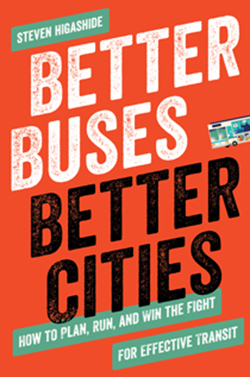 It's a strange time to be a bus system. Stories about plummeting ridership, service cuts, and reduced fares are ubiquitous, it seems, but rare examples of planning ambition and political courage also dot the headlines—like with Houston's comprehensive system redesign, the commitment to bus priority on 14th Street in New York City and Market Street in San Francisco. Despite the rare success, in the world of transportation and land use planning, buses remain a glaring missed opportunity, a sorely neglected tool, and a frustrating disconnect.
It's a strange time to be a bus system. Stories about plummeting ridership, service cuts, and reduced fares are ubiquitous, it seems, but rare examples of planning ambition and political courage also dot the headlines—like with Houston's comprehensive system redesign, the commitment to bus priority on 14th Street in New York City and Market Street in San Francisco. Despite the rare success, in the world of transportation and land use planning, buses remain a glaring missed opportunity, a sorely neglected tool, and a frustrating disconnect.
Luckily, the bus has a champion in Steven Higashide, who writes the new book Better Buses, Better Cities with the clarity of conviction to significantly raise the level of discussion on the subject of public transit, and especially bus transit.
Higashide works for TransitCenter, so some of the expertise and clarity found in these pages is institutional, but nothing about these chapters comes off as dogmatic or cautious. Higashide provides every kind of evidence for the user experience of an effective bus system, as only a seasoned bus rider and well educated expert could. Higashide also pragmatically reroutes every description of a well planned and maintained bus system back to a discussion about how to win the investments and political support necessary to make that vision of bus transit a reality.
More threats to more efficient and useful public transportation systems loom, after a decade of broken promises and failed potential from ride-hailing companies and autonomous car companies. Better Buses, Better Cities offers hope that cities still have alternatives to car-centric planning, and it's still possible to transform the public realm to improve the quality of life of every resident. Armed with this book, an informed citizen, commuter, planner, or politician can have a role in that transformation.
Capital City: Gentrification and the Real Estate State
Samuel Stein
Verso Books
March 12, 2019, 208 pages
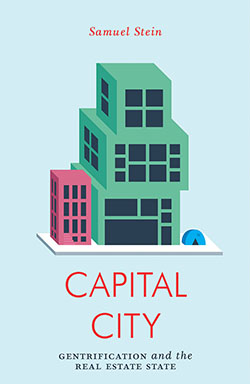 Capital City presents a distorted vision of American real estate development and unfairly belittles urban planners. It is a provocative book and an engaging read. But it is not a good book. It earns a place on this list because, for better or worse, it captures an important, and vocal, segment of contemporary urban activists. They and Stein are skeptical of the impact of capital and capitalism on urban form and, especially, on vulnerable populations. Rightfully so. Ugly developments are real. Gentrification is real. Displacement is all too real. Activists and planners need to interrogate these trends. What is beyond the pale, though, is Stein's criticism of urban planners.
Capital City presents a distorted vision of American real estate development and unfairly belittles urban planners. It is a provocative book and an engaging read. But it is not a good book. It earns a place on this list because, for better or worse, it captures an important, and vocal, segment of contemporary urban activists. They and Stein are skeptical of the impact of capital and capitalism on urban form and, especially, on vulnerable populations. Rightfully so. Ugly developments are real. Gentrification is real. Displacement is all too real. Activists and planners need to interrogate these trends. What is beyond the pale, though, is Stein's criticism of urban planners.
Stein's depiction of planners as either unwitting pawns or willing accomplices of "the real estate state" is supported mainly by assertion and conjecture. He tells an appealing story of malicious capitalism but ignores, for instance, the fact that the profits in real estate stem, at least in part, from artificial constraints placed on development in many cities. Stein acknowledges only in passing the inherently difficult and crucial role that planners play as mediators and, sometimes, visionaries in their respective cities. Rather than get planners on board with this anti-capitalist ethos, Stein seems to want to push them away. Capital City's greater value is in helping planners appreciate the forces that complicate their work. In that regard, dogmatic resistance may be just as counterproductive as rampant capitalism is. Obnoxious though it may be, Capital City might inspire planners to reaffirm their convictions, refine their philosophies, and, perhaps, fight the power with greater resolve than ever before.
See a Planetizen review of Capital City.
Cities: The First 6,000 Years
Monica Smith
Viking
April 16, 2019, 304 Pages
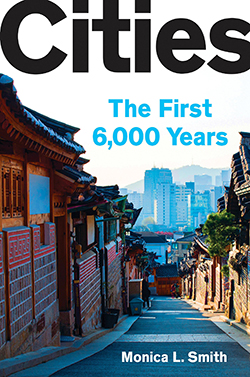 Let us never turn down an opportunity to learn a lucid, thoughtful history lesson. Though cities have been around for, as Smith's title says, six millennia, the examples that contemporary urban planners can draw from Bronze Age settlements are, arguably, more relevant than ever. Transportation technologies (e.g., shoes) and civic virtues (e.g., proximity) pioneered by ancient peoples are more relevant than ever in the Information Age.
Let us never turn down an opportunity to learn a lucid, thoughtful history lesson. Though cities have been around for, as Smith's title says, six millennia, the examples that contemporary urban planners can draw from Bronze Age settlements are, arguably, more relevant than ever. Transportation technologies (e.g., shoes) and civic virtues (e.g., proximity) pioneered by ancient peoples are more relevant than ever in the Information Age.
An archeologist by trade, Smith investigates the form and function of ruins and relates them to familiarly quotidian matters, like waste, food, commerce, innovation, and movement. Smith draws connections between ancient cities throughout the world, from Mesopotamia to Rome to India to China. Smith discusses cities' historical role in creating the middle class—however that might be defined in a given place and era—as well as the infrastructure and governmental structures necessary to facilitate commerce. Smith's work is important in part because many ancient cities are also modern cities and because the same aspirations and processes that created the first tiny settlements—those of individuals seeking better lives and strength in numbers—are the same that create the modern megacities of today.
Choked: Life and Breath in the Age of Air Pollution
Beth Gardiner
University of Chicago Press
April 19, 2019, 312 Pages
 Nearly every plan drafted in the United States since 1963 has explicitly or implicitly referred to air pollution. The cars that drive around cities create pollution, and the people who live and work alongside those cars breathe it in. Pollution is taken to be a "bad thing"—which it is—but it's likely that most people know only the slightest details about the poisons they're breathing and the policies that regulate them. If planners are responsible for what goes on the ground, Choked helps them understand what's going on in the air above.
Nearly every plan drafted in the United States since 1963 has explicitly or implicitly referred to air pollution. The cars that drive around cities create pollution, and the people who live and work alongside those cars breathe it in. Pollution is taken to be a "bad thing"—which it is—but it's likely that most people know only the slightest details about the poisons they're breathing and the policies that regulate them. If planners are responsible for what goes on the ground, Choked helps them understand what's going on in the air above.
Choked includes crucial insights into biology and chemistry while touring some of the world's most famously polluted places, including Dehli, Los Angeles, and London. It includes hopeful notes like Berlin and China and unpacks the Clean Air Act, illustrating vastly divergent responses to what is perhaps the greatest negative externality the world has ever known. Choked offers invaluable background knowledge for planners advocating for increased densities and alternative transportation and environmental justice.
Order without Design: How Markets Shape Cities
Alain Bertaud
The MIT Press
December 4, 2018, 413 pages
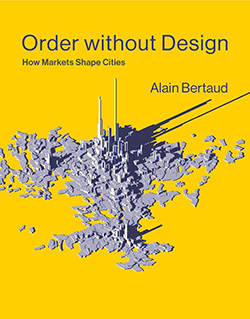 Bertaud asks planners to think more like economists and less like designers, because the labor market has a great deal more power to shape cities and growth than the recent history of urban planning in the United States allows.
Bertaud asks planners to think more like economists and less like designers, because the labor market has a great deal more power to shape cities and growth than the recent history of urban planning in the United States allows.
Fans of command and control planning powers, currently only in use in North Korea and China, according to Bertaud, will be challenged by the rhetoric of Order without Design. Bertaud also repeatedly decries planning for "urban villages" as a fiction and a fantasy, for another example of the grenades Bertaud lobs in the direction of the planning profession throughout this book. It's important to note, however, how many of the prescriptions of the market urbanism approach to planning resemble the prescriptions of an emerging school of pro-development and pro-mobility thought among planners.
It might not be a message planners want to hear, but that probably means they should listen anyway: sometimes city building forces are more powerful than bureaucracy or design. Understanding more of the what, when, where, why, and how of the market can help planners be more effective in regulating, and sometimes choosing not to regulate, the city.
See a Planetizen review of Order without Design.
Soft City: Building Density for Everyday Life
David Sim
Island Press
August 20, 2019, 256 Pages
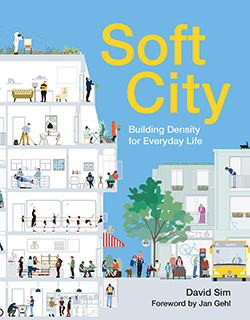 For every progressive planner who has struggled to explain the logic of infill development, the pointlessness of setbacks, and all the alternative urban realities that currently elude many U.S. cities, Soft City might prove an invaluable companion. Written by Denmark-based architect David Sim, Soft City does not propose any radical new ideas for how cities can look and function. What it does do is recount progressive planning principles—call them what you will: smart growth, transit-oriented development, people-centric cities, etc.—and display them visually with clear, appealing graphics. It reveals different approaches to density, different approaches to building configuration, and all the different approaches used by cities to design streets and sidewalks more humanely and equitably.Soft Cityis arguably idealistic and decidedly Eurocentric, but that's partly the point: American cities have developed some pretty mediocre urban patterns; Soft City shows us what they're missing.
For every progressive planner who has struggled to explain the logic of infill development, the pointlessness of setbacks, and all the alternative urban realities that currently elude many U.S. cities, Soft City might prove an invaluable companion. Written by Denmark-based architect David Sim, Soft City does not propose any radical new ideas for how cities can look and function. What it does do is recount progressive planning principles—call them what you will: smart growth, transit-oriented development, people-centric cities, etc.—and display them visually with clear, appealing graphics. It reveals different approaches to density, different approaches to building configuration, and all the different approaches used by cities to design streets and sidewalks more humanely and equitably.Soft Cityis arguably idealistic and decidedly Eurocentric, but that's partly the point: American cities have developed some pretty mediocre urban patterns; Soft City shows us what they're missing.
Strong Towns: A Bottom-Up Revolution to Rebuild American Prosperity
Charles L. Marohn
Wiley
October 1, 2019, 256 pages
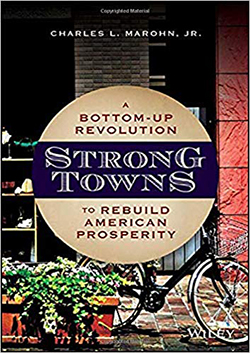 Because of the incremental and ephemeral presentation of blogs and websites, regular readers of the online version of Strong Towns might still not have a grasp of the full scope and application of the Strong Towns ethos. Now there's a book that places the whole way of thinking into a tangible, hermetic artifact. The Strong Towns book is a positive development, because the Strong Towns approach has provided a consistently positive intellectual example for planners throughout its existence.
Because of the incremental and ephemeral presentation of blogs and websites, regular readers of the online version of Strong Towns might still not have a grasp of the full scope and application of the Strong Towns ethos. Now there's a book that places the whole way of thinking into a tangible, hermetic artifact. The Strong Towns book is a positive development, because the Strong Towns approach has provided a consistently positive intellectual example for planners throughout its existence.
Strong Towns, and, by extension its founder, Charles Marohn, is often cited as an example of non-partisan planning politics, or a contemporary version of the compassionate conservatism of yesteryear. As evident in this book, Strong Towns invites planners and planning-interested citizens to question their assumptions about development, infrastructure, and the policies that pay for the whole thing (or don't pay for it, as it were). There is no cow too sacred for Marohn, who throughout a history as a public figure and now in the pages of this books completely skewers the structural deficits created by the past few generations of U.S. planning and development history.
Strong Towns doesn't solely exist to criticize, however. Marohn devotes numerous chapters of this book to charting a path forward, describing the Strong Towns vision for rational policies and productive placemaking. Marohn describes the transformation sought by the Strong Towns movement as a bottom-up process of collaboration, using terms familiar to progressives and grassroots organizers who will find these arguments against government waste surprisingly persuasive.
You won't have to be a card-carrying member of the Strong Towns movement to take value from this book. You also won't have to agree with everything you read in these pages to benefit from the addition of a persistent, nagging voice in the back of your mind reminding you to follow the money, double check the numbers, and expect your hard-earned tax dollars to be money well spent.
This Land: How Cowboys, Capitalism, and Corruption are Ruining the American West
Christopher Ketcham
Viking
July 16, 2019, 432 Pages
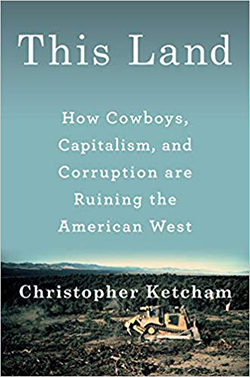 The majority of city folk probably know about the world's and the country's environmental crises: climate change, habitat loss, extinctions, and so forth. Christopher Ketcham wants everyone to know that it's far worse than anyone can, or wants, to imagine. This Land exposes both the perpetrators and the enablers of the degradation of the American West. The former group are obvious suspects: ranchers, drillers, loggers, and miners who want to graze on or dig up as much of the rural West as possible. The enablers, according to Ketcham, are almost all of the federal agencies that are charged, supposedly, with protecting those lands—or at least managing them responsibly. Instead, he accuses agencies like the Forest Service and Bureau of Land Management of essentially doing the bidding of rural and industrial stakeholders, knowing that they are beyond the watchful eyes of most Americans.
The majority of city folk probably know about the world's and the country's environmental crises: climate change, habitat loss, extinctions, and so forth. Christopher Ketcham wants everyone to know that it's far worse than anyone can, or wants, to imagine. This Land exposes both the perpetrators and the enablers of the degradation of the American West. The former group are obvious suspects: ranchers, drillers, loggers, and miners who want to graze on or dig up as much of the rural West as possible. The enablers, according to Ketcham, are almost all of the federal agencies that are charged, supposedly, with protecting those lands—or at least managing them responsibly. Instead, he accuses agencies like the Forest Service and Bureau of Land Management of essentially doing the bidding of rural and industrial stakeholders, knowing that they are beyond the watchful eyes of most Americans.
This Land is imbalanced and fiercely opinionated—it includes scant response from those whom Ketcham accuses—but its arguments are powerful and worthy of consideration. And Ketcham does some impressive investigative reporting, going so far as to infiltrate groups of hunters and to interview Cliven Bundy in the infamous scofflaw's own home. Ketcham's sense of urgency and outrage is palpable, and this book's prose rivals that of literary and activist heroes such as Aldo Leopold and Ed Abbey. It's an essential account for anyone who cares about the American landscape.
Honorable Mention
Brooklyn: The Once and Future City
Thomas Campanella
Princeton University Press
September 10, 2019, 552 Pages
Every writer knows that there's inherent drama in an underdog story. Brooklyn is the ultimate urban underdog. Brooklyn native Campanella celebrates the onetime city, now-borough's astonishingly rich history, characterized by diversity, immigration, industrialization, decline, and now rebirth. Amazingly, this 500-page volume makes it only to the year 1970. Campanella does not cover the borough's recent resurgence, but it is always in the background, making this painstakingly detailed history vibrant and relevant.
Downriver: Into the Future of Water in the West
Heather Hansman
University of Chicago Press
March 22, 2019, 221 pages
For Downriver, Heather Hansman takes a page from Bill Bryson's A Walk in the Woods to connect narratives of personal growth with knowledge of the outside world—all gained along a long, meandering path in the outdoors. In this case, the path is provided by the Green River, which Hansman sets out to navigate from headwaters in the Green River Lakes in Wyoming to its confluence with the Colorado River in Canyonlands National Park in Utah. The 730 miles of the Green River offer numerous case studies in the complexities and risks of water management in the Western United States: farmers, ranchers, urban and rural communities, native tribes, and decades-old legal doctrine pull at the river from every side and in increasing numbers as the water flows toward the Colorado. As noted at numerous points by Hansman, paddling a river is a lot like relying on a river's flow for your business or your life: you always have to look downstream.
Vancouverism
Larry Beasley
UBC Press, On Point Press
May 15, 2019, 424 pages
The various touches of production value in this book—large format; oodles of colorful, well explained pictures; a former planner as author; and an appearance by an respected local journalist in the front matter—all reflect well on urban planning as a subject worthy of well resourced publishing companies. The singular approach to urban planning and design evident in the recent history of the city of Vancouver also provides a subject worthy of that ambition.
Expanding on the idea that cities should be designed—not just cobbled together on a site-by-site basis like every other major city in North America—the book makes a case for Vancouver as a model for the future of planning in an era of climate change, congestion, and affordability pressures. Planners outside of Vancouver will read this book with equal parts envy and excitement: What happened in the second half of the 20th century and the beginning of the 21st century in Vancouver could only have happened in this corner of Canada, but every city on the continent has a chance to write its own unique version of this unique story of urban planning and city building.
Wild LA: Explore the Amazing Nature in and Around Los Angeles
Lila Higgins and Gregory B. Pauly with Jason G. Goldman and Charles Hood
Timber Press
March 19, 2019, 332 pages
Every city should have its own version of Wild LA. The book provides an engaging approach to the natural environment of the city—to the signs of region's pre-historical ecology still visible in the contemporary built environment to the ongoing conversation about water and its role in this semi-arid environment. The book includes a wildlife guide for the city and a field trip planner to take advantage of the multi-generational learning opportunities sprinkled all over Southern California. Researched and written by a team from the Natural History Museums of Los Angeles County, readers are in the best possible hands for encouraging a passion for the nature found all around the second most populous city in the United States.

Maui's Vacation Rental Debate Turns Ugly
Verbal attacks, misinformation campaigns and fistfights plague a high-stakes debate to convert thousands of vacation rentals into long-term housing.

Planetizen Federal Action Tracker
A weekly monitor of how Trump’s orders and actions are impacting planners and planning in America.

In Urban Planning, AI Prompting Could be the New Design Thinking
Creativity has long been key to great urban design. What if we see AI as our new creative partner?

King County Supportive Housing Program Offers Hope for Unhoused Residents
The county is taking a ‘Housing First’ approach that prioritizes getting people into housing, then offering wraparound supportive services.

Researchers Use AI to Get Clearer Picture of US Housing
Analysts are using artificial intelligence to supercharge their research by allowing them to comb through data faster. Though these AI tools can be error prone, they save time and housing researchers are optimistic about the future.

Making Shared Micromobility More Inclusive
Cities and shared mobility system operators can do more to include people with disabilities in planning and operations, per a new report.
Urban Design for Planners 1: Software Tools
This six-course series explores essential urban design concepts using open source software and equips planners with the tools they need to participate fully in the urban design process.
Planning for Universal Design
Learn the tools for implementing Universal Design in planning regulations.
planning NEXT
Appalachian Highlands Housing Partners
Mpact (founded as Rail~Volution)
City of Camden Redevelopment Agency
City of Astoria
City of Portland
City of Laramie





























